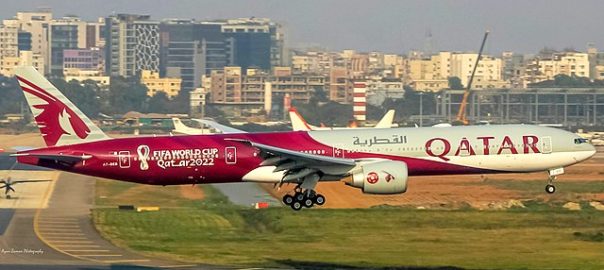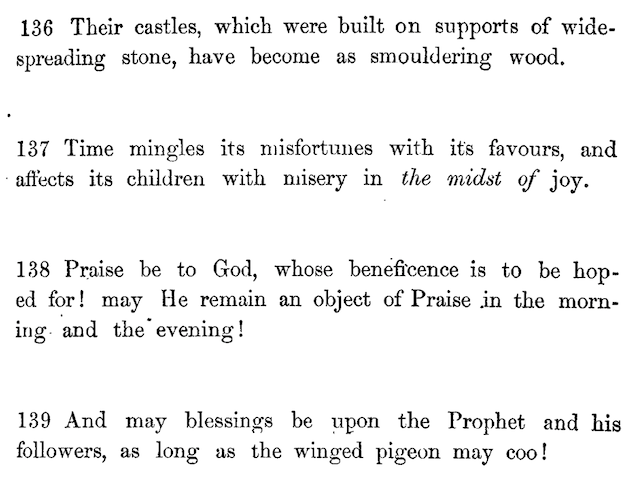A while ago, a Swedish reporter asked me to answer a few questions about Qatar and the World Cup. The segment eventually got cut, but since I had already written the answers, I will instead post them here.
How would you describe Qatar as a country, politically/economically?
Qatar is a small country, slightly smaller than Connecticut, and the number of citizens is less than half of the population of New Haven metropolitan area. However, almost 90% of everyone living in Qatar are so called guest workers, or migrant workers, meaning their residency is tied up to their work. Before the discovery of oil in the area, Qatar was a relatively poor country and its economy centered on pearl diving. Today, Qatar is an oil and gas country and one of the richest countries in the world per capita. However, it is a very segregated country, and the riches are largely built on exploitation of cheap foreign labor, mainly from South Asia (such as Pakistan, India and Bangladesh). The country is a type of monarchy, headed by an Emir, and with limited possibilities of political influence of its citizens. They do have a consultative assembly, the members of which are elected, but there are no political parties, and the assembly is mainly advisory to the government.
In recent years, Qatar has been keen on building “soft power,” meaning cultural and social means of gaining support for its activities and politics and means of improving the country’s image abroad. This includes a purchase of the large department store Harrods in London and the Hollywood production company Miramax. Qatar Airways has invested internationally and expanded to make Doha a popular airport-hub, as well as creating hubs around the world, especially in countries with members of the FIFA executive committee. Of course, Qatar is also internationally known as the owner of the news and media conglomerate Al Jazeera, which now operates around the world, and dominates Arabic-language news.

There is a lot of discussion about the upcoming World Cup in Qatar. Why?
The controversy on Qatar hosting the FIFA World Cup centers mainly on two issues. The first is accusations of corruption and irregularities surrounding the election process, although the critique has mostly been directed towards FIFA rather than Qatar. The irregularities include for example a meeting between then-emir of Qatar, Hamad bin Khalifa Al Thani, then-president of France, Nicolas Sarkozy, and then-president of the Union of European Football Associations (UEFA), Michel Platini, where it is believed an agreement was made that Qatar would buy the French football team Paris Saint-Germain (PSG), in exchange for Platini’s support for the World Cup in Qatar. PSG officially came under Qatari ownership the year after Qatar had been chosen as the host, although the discussions had then been going on for a while. Furthermore, Platini’s son was given a high-paying position in Qatar shortly after Platini had voted for Qatar in the host-election.
No investigations have been able to prove that Qatari representatives directly bribed FIFA, although the accusations of corruption and other scandals led to Platini and the FIFA president, Sepp Blatter, being banned from football administration until 2023 and forced to resign from FIFA. They are now facing charges in Switzerland related to fraudulent payments from FIFA to Platini, and FIFA has since changed how they decide the World Cup host.
The second part of the critique is about workers’ rights, health and safety in the preparation for the World Cup. It is estimated that around 6500 migrant workers have died during the constructions of the many football stadiums built in Qatar since they won the host election, although many believe that the real number is even higher. In the recent past Qatar had a system for migrant workers called the kafala-system, which meant that the employer sponsors the workers and is responsible for their visas. This meant that if you lose your job, you also lose your visa, and it can be very difficult to change jobs or criticize working conditions due to fear of losing your job. There have been reports of employers confiscating their workers’ passports, and, as mentioned, extreme heat and dangerous working conditions has led to thousands of workers’ death. Some have asked – and FIFA happily repeats these questions – whether these working conditions had been given as much media attention if it was not for the World Cup. In 2020, Qatar became the first country in the Arab Gulf to stop the kafala system.
Other discussions – which in the light of possible corruption and the death of migrant workers may be seen as less important – deal with the fact that this will be the first time that the World Cup is not held in the summer. Since the temperature in Qatar can reach 40-50 degrees in June and July, the cup will be held in December, with the finale planned for Qatar’s national day, December 18th. Some believe this will mean a different experience for football fans who are used to their summer vacation and the World Cup coinciding, while others believe that this scheduling will mean a break for the players between the national football seasons and the World Cup, which in turn means more well-rested players.
One last thing that is in favor of Qatar hosting is that it is a small country, meaning that the stadiums are relatively close to each other, making it easier for attendees to catch several games in a day.
What does it mean to accept Qatar as the host?
This depends on who you ask. Some believe that it is symbolically important that this is the first time that a Muslim country hosts the World Cup, and that in times of increasing islamophobia, this can lead to an improved view and better understanding of Islam as a religion – particularly among football fans around the world. Sepp Blatter has said that they are opening up football, making it more inclusive. At the same time, the publicity coming out of Qatar at the moment is not precisely good, for example regarding the death of thousands of workers, and it is still necessary for the Qatar authorities to follow through on the new system for workers.
Social issues have also been raised, for example how FIFA views the fact that same-sex relations is criminalized in the country, or that alcohol consumption – often associated with football – is not allowed in public. FIFA will most likely put pressure on Qatar to make exemptions for alcohol sales at the stadiums, as they also did when the World Cup was held in Brazil, but I doubt that the same kind of pressure will be made for changes in the laws on same-sex relations or LGBTQ+ issues. Nevertheless, the Qatari government is pragmatic, and they are unlikely to cause troubles for attendees, yet some official World Cup hotels have already said that they do not accept LGBT guests to stay with them.
What demands should be put on Qatar ahead of the World Cup?
It is difficult in such a late state to place any demands. That should probably have been done directly in relation to Qatar being chosen as the host in 2010. Such demands could have been to guarantee the protection and safety of the workers that made the World Cup possibly by building stadiums around the country. Now they have already lost their lives, and that cannot be undone. Pressure on Qatar did lead to reform of the kafala-system, although some issues remain and more can be done to improve the conditions of the country’s workers. Beyond that, FIFA should take a clearer position on guaranteeing that both players and attendees will be safe in the country, regardless of religion or sexual orientation.














